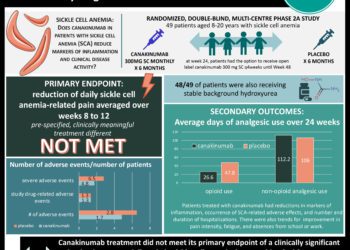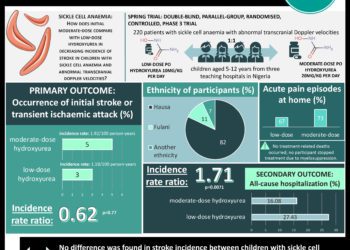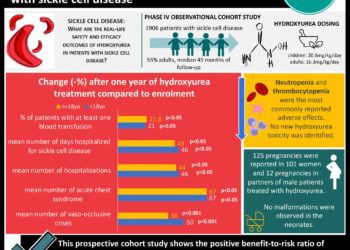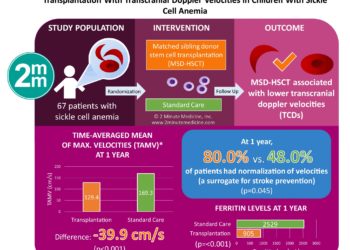Sickle cell trait significantly increases the risk of exertional rhabdomyolysis but not mortality
1. Black U.S. soldiers with sickle cell trait had a significantly increased risk of exertional rhabdomyolysis compared to those without the trait.
2. In the same cohort of black U.S. soldiers, there was no association between sickle cell trait and incidence of mortality.
Evidence Rating Level: 2 (Good)
Study Rundown: Previous studies raise concern about the risk of exercise-related sudden death among individuals with sickle cell trait. However, literature supporting this association are largely case reports without epidemiologic data. This study used a large cohort of black U.S. soldiers to investigate the association between sickle cell trait, exertional rhabdomyolysis, and mortality. Though sickle cell trait was associated with a significantly increased risk of exertional rhabdomyolysis, no significant difference in mortality among soldiers with and without the trait were found. The study also found an increased risk of exertional rhabdomyolysis based on sex, gender, and several modifiable risk factors – a high body mass index (BMI), tobacco use, antipsychotics, and statin use.
This study benefited from a large study group. Though not all black soldiers were included, there was no evidence of selection bias. Sickle cell trait was confirmed with laboratory testing for hemoglobin AS (HbAS), a strength compared to population-based studies that use self-reporting. Factors that limit the study’s accuracy include the use of clinician-reported International Classification of Diseases (ICD-9) coding and the possibility of unexplored confounding variables, such as alcohol consumption.
Click to read the study, published today in NEJM
Relevant Reading: Sickle-cell trait as a risk factor for sudden death in physical training
In-Depth [retrospective cohort]: This retrospective cohort study used the SMDR to analyze the incidence of exertional rhabdomyolysis and mortality of black U.S. soldiers who had undergone testing for HbAS over a four-year period. Primary outcomes of interest were exertional rhabdomyolysis and death. The primary variable of interest was the presence of sickle cell trait. Outcomes were analyzed according to person-months contributed by 47 944 participants. Other variables included age, gender, BMI, self-reported tobacco use, and the use of agents associated with rhabdomyolysis (antipsychotics, statins, and stimulants).
No significant difference in the rate of death among soldiers with sickle cell trait was found (HR 0.99; 95%CI 0.46 to 2.13, p = 0.97) but was associated with a 54% increased risk of exertional rhabdomyolysis (HR 1.54; 95%CI 1.12 to 2.12, p = 0.008). Men were associated with an increased risk of exertional rhabdomyolysis compared to women (HR 0.51; 95%CI 0.38 to 0.67; p < 0.001) and there was a 57% increased risk with age over 36 years (HR 1.57; 95%CI 1.06 to 2.32; p = 0.02). Among modifiable risk factors, BMI greater than 30 (HR 1.39; 95%CI 1.04 to 1.86; p = 0.03), tobacco use in the previous 6 months (HR 1.54; 95%CI 1.23 to 1.94; p < 0.001), recent antipsychotic medication use (HR 3.02; 95%CI 1.34 to 6.82; p = 0.008), and recent statin use (HR 2.89; 95%CI 1.51 to 5.55; p = 0.001) were all associated with an increased risk of exertional rhabdomyolysis.
Image: PD
©2016 2 Minute Medicine, Inc. All rights reserved. No works may be reproduced without expressed written consent from 2 Minute Medicine, Inc. Inquire about licensing here. No article should be construed as medical advice and is not intended as such by the authors or by 2 Minute Medicine, Inc.







![Reduced neuronal BRCA1 associated with decreased DNA repair in Alzheimer’s disease [PreClinical]](https://www.2minutemedicine.com/wp-content/uploads/2015/12/DNA_Furchen_edited-75x75.png)